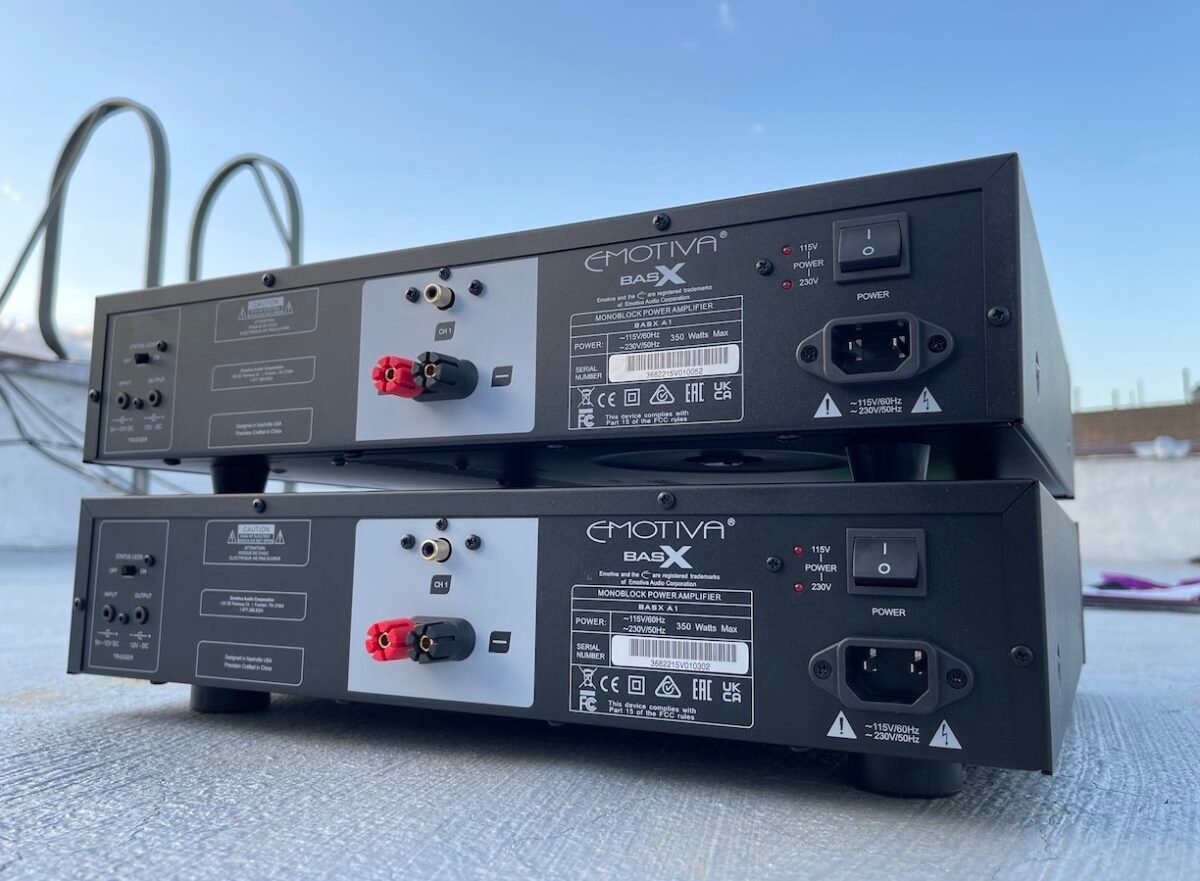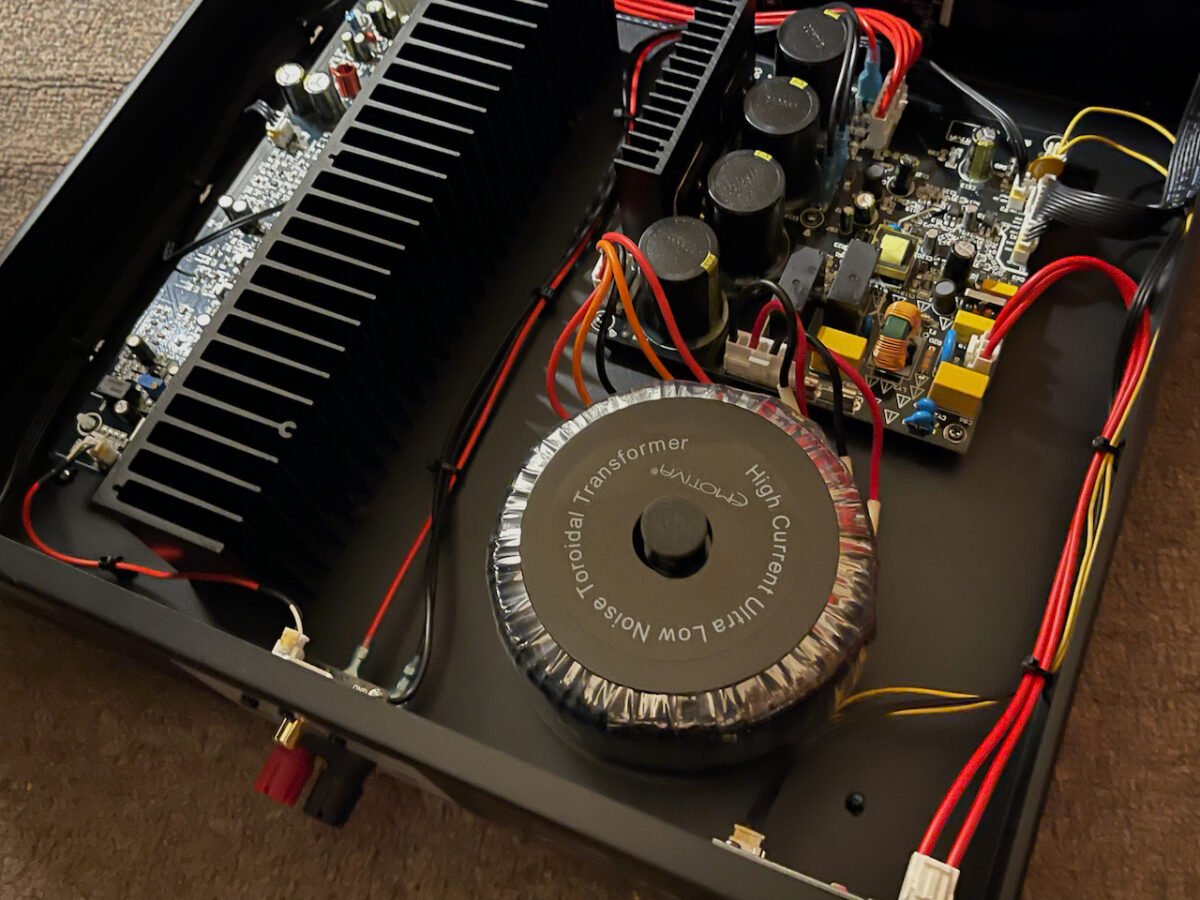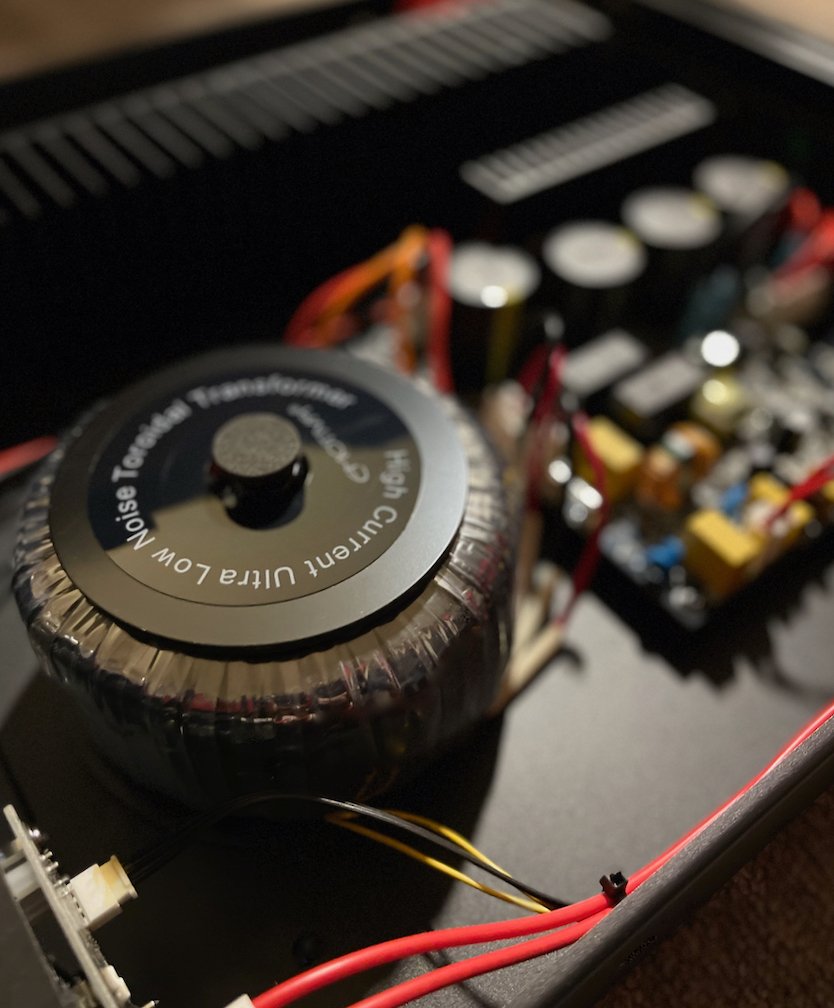Emotiva BasX A1 Monoblock Power Amplifiers
At $499/each ($998/pair), Emotiva’s BasX A1 Monoblock Power Amplifiers feature linear power supplies, high current, short signal paths, large toroidal transformers, class A/B output stages. At 22 lbs each, 17”W x 4”H x 15 1/2”D, these amps are moderately compact for what they deliver. Power output is rated at 200 watts RMS into 8 Ohms (THD < 0.05%) and 325 watts RMS into 4 Ohms (THD < 0.1%) Input connections are unbalanced RCA. Speaker outputs employ 5-way binding posts.

The amplifier features a solid steel chassis and milled aluminum faceplate. The appearance is simple and functional, with excellent construction inside and out.
Where the Emotiva A1 shines is its fidelity. Amplifiers in this price range often come with compromises (thin, soft, brittle, veiled), but with the A1, as much as we expected to find areas of less than ideal performance, we could not.

Lows are weighty, muscular and anchored. Kick drums hit with fist-like blows. Bass, organs, tubas are reproduced with deep, earthy hues. Midrange frequencies are pure, detailed and animated, allowing the personality of instruments and singers to shine through. Highs are effortlessly natural, pleasantly illuminating.
One of the surprising attributes of the A1 pair is that they can drive low impedance speakers with power and grandeur.

A few years ago, Pro Audio Times reviewed the Emotiva TA-100 stereo integrated amplifier. It worked well with a range of bookshelf speakers, but did not deliver as convincingly with lower impedance Lipinski L707 speakers; the music sounded slightly strained and closed in.
Contrarily, the BasX A1 monoblocks power the Lipinskis effortlessly, with authority, grip and control. When I first listened to the A1’s, my brain had to process that these affordable amplifiers sounded as good as two higher tier amplifiers; Cello (Mark Levinson) HTA-2 and a custom Purifi 1ET400A with a Weiss OP2-BA discreet op amp.

Compared with the Cello, the BasX A1 is similar in having a fully fleshed out delivery, with deep, forceful bass, punchy transients, tonal coherency, and openness. The highs on the Cello are bit more airy and etched while the Emotiva A1’s are slightly smoother and more integrated. The Purifi is the most detailed of the three amplifiers, especially in the mids, where there is a wide, picturesque intensity that takes its presentation into a more analytical realm.

BasX A1 monos seem to strike the perfect balance between technicality and musicality. Sonics are nuanced and detailed, but never artificial. For analog purists looking to draw some character out of their digital playback, the A1’s might be worth a listen, as they have a way of bringing out the richness and essence of a recording.
The classical chamber piece, Brahms: Piano Quaret No. 3 in C Minor Op. 60 – 3. Adante (Live) comes to life with the color and vividness of a Matisse painting.
With a rock track like The Districts ‘Peaches’ the BasX A1’s sweetly unravel the contrasting elements of the production; warm, pillowy bass tones set against crunchy, harmonically layered guitars.

The only audiophile or pro audio feature that is missing on the BasX A1 is a balanced XLR input. But with quality unbalanced RCA interconnects like DH Labs BL-1, noise floor is low and power is abundant.
When these amplifiers were first connected, it was clear that they were special, and after almost a year of use, they continue to deliver beautiful, soul stirring sonics.
Bravo, Emotiva.
